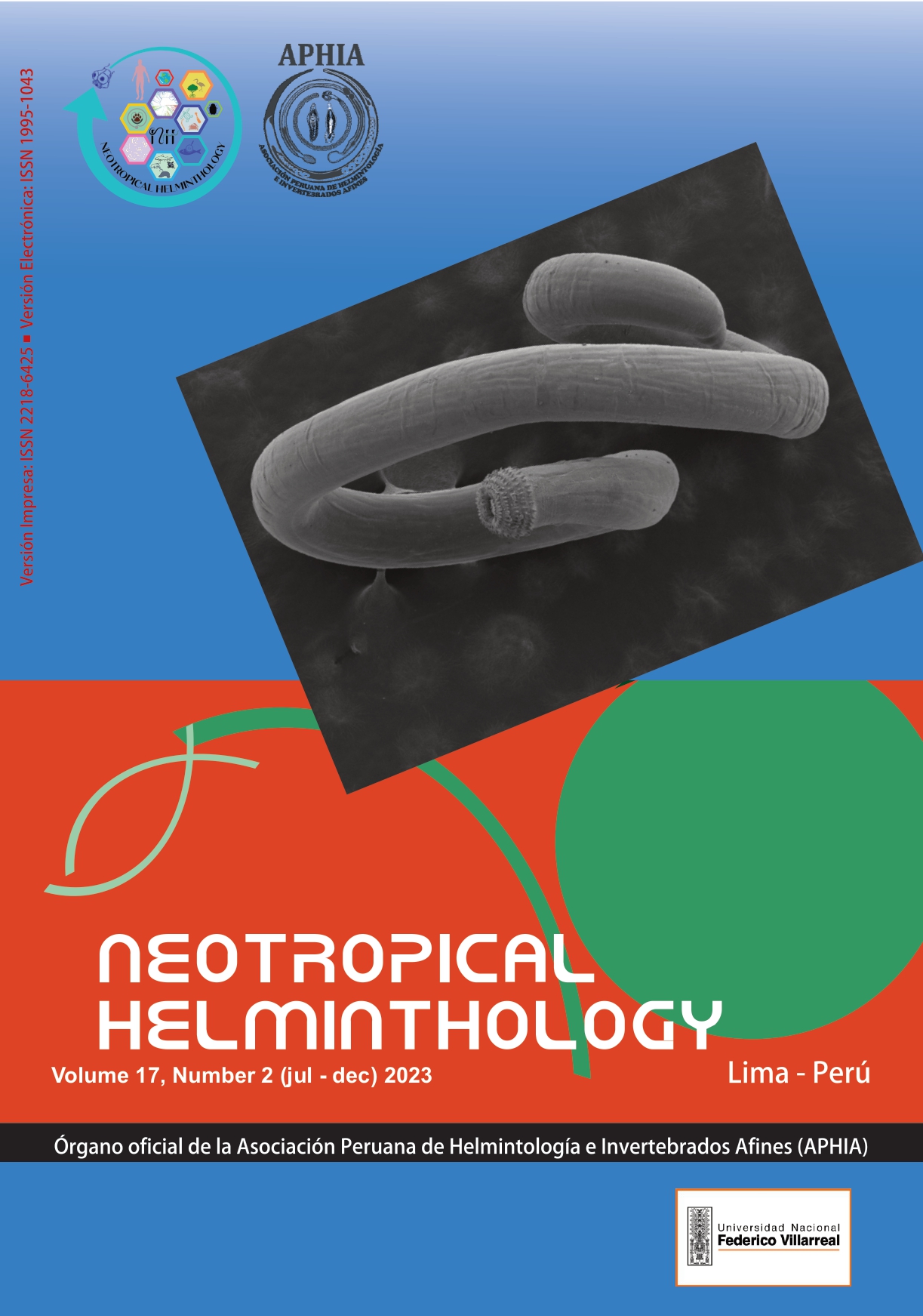Morphology and cytogenetics of Rhabditida nematodes parasiting spiders and scorpions in Argentina
DOI:
https://doi.org/10.24039/rnh20231721654Keywords:
Argentina, cytogenetic, nematodes, Rhabditidae, scorpions, spidersAbstract
The discovery of nematodes in spiders and scorpions from a manual sampling in the city of La Plata, Argentina, revealed the presence of specimens of the order Rhabditda. The main objective of this study is to present the presence of nematodes in the arachnid group, for which there is little precedent. One of the nematodes found belongs to the genus Rhabditis Dujardin, 1845, of saprophytic character, characterized by carrying a fungus that kills the host and degrades it in order to feed itself. This was found in the general cavity of the body of the spider Dysdera crocata Koch, 1838. It is characterized by having a thin cuticle, closed labial papillae, a long stoma without teeth, an esophagus with a middle bulb with a valve and a valved basal bulb, and a middle vulva, short and conical caudal appendage. Mitotic division is described and information about the morphology of chromosomes is provided. We carried out a cytogenetic study of the Rhabditis, they showed that they have five chromosomes, of which 2 are larger, in metaphase they are acro-telocentric. The other genus found is Cruznema (Artigas, 1927) Dougherty, 1953, parasite of the intestine of the scorpion Tityus carrilloi Ojanguren-Affilastro, Kochalka, Guerrero-Orellana, Garcete-Barrett, De Roodt, Borges & Ceccarelli, 2021, characterized by having a cuticle with longitudinal striae and transverse rings, mouth surrounded by six well-separated lips, cuticularized stoma, long and with three well-developed teeth, esophagus with a strong and muscular middle bulb and a valved basal bulb, female with a prodelphic ovary, vulva posterior to the half the length of the body, caudal appendage short and conical.
Downloads
Published
How to Cite
Issue
Section
License

This work is licensed under a Creative Commons Attribution-NonCommercial-NoDerivatives 4.0 International License.
OBJETO: El AUTOR-CEDENTE transfiere de manera TOTAL Y SIN LIMITACIÓN alguna al CESIONARIO los derechos patrimoniales que le corresponden sobre la (s) obra(s) tituladas: xxxxxxxxxxxxxxxx, por el tiempo que establezca la ley internacional. En virtud de lo anterior, se entiende que el CESIONARIO adquiere el derecho de reproducción en todas sus modalidades, incluso para inclusión audiovisual; el derecho de transformación o adaptación, comunicación pública, traducción, distribución y, en general, cualquier tipo de explotación que de las obras se pueda realizar por cualquier medio conocido o por conocer en el territorio nacional o internacional.
REMUNERACIÓN: La cesión de los derechos patrimoniales de autor que mediante este contrato se hace será a título gratuito.
CONDICIONES Y LEGITIMIDAD DE LOS DERECHOS: El AUTOR-CEDENTE garantiza que es propietario integral de los derechos de explotación de la(s) obra(s) y en consecuencia garantiza que puede contratar y transferir los derechos aquí cedidos sin ningún tipo de limitación por no tener ningún tipo de gravamen, limitación o disposición. En todo caso, responderá por cualquier reclamo que en materia de derecho de autor se pueda presentar, exonerando de cualquier responsabilidad al CESIONARIO.
LICENCIA DE ACCESO ABIERTO: El AUTOR-CEDENTE autoriza que manuscrito publicado en La Revista Neotropical Helminthology permanece disponible para su consulta pública en el sitio web https://www.neotropicalhelminthology.com/ y en los diferentes sistemas de indexación y bases de datos en las que la revista tiene visibilidad, bajo la licencia Creative Commons, en la modalidad Reconocimiento-No comercial- Sin Trabajos derivados –aprobada en Perú, y por lo tanto son de acceso abierto. De ahí que los autores dan, sin derecho a retribución económica, a la Asociación Peruana de Helmintología e Invertebrados Afines (APHIA), los derechos de autor para la edición y reproducción a través de diferentes medios de difusión.


 Numero 2 Volumen 19 - 2025 (versión Anticipada)
Numero 2 Volumen 19 - 2025 (versión Anticipada)














































